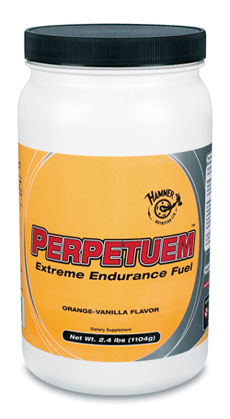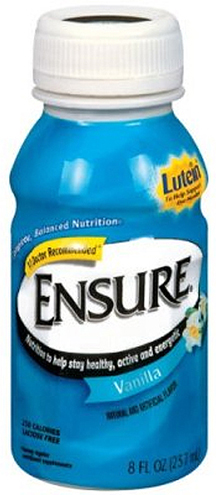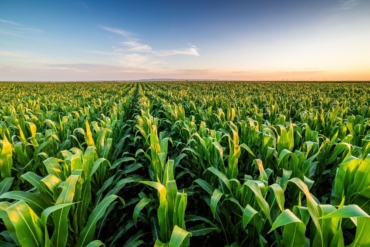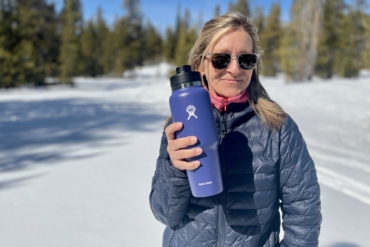You’re seven miles down the trail. A pack on your back, boots on your feet. Sun streaming in through trees above.
But a time bomb is ticking inside. Your legs are getting heavy. Your breath is labored, feet plodding now, and camp is still five miles to go.
Your tank is on empty. Time to eat. Time to get those calories down. But how to best fuel up?

Adventure racer Mike Kloser downing GU energy gel during a race. Photo: Dan Campbell
Eating optimally while on the go — whether hiking, biking, or climbing a mountain — can be tough. For high-exertion events such as triathlons or ultra-runs, your stomach might protest the very act of securing the sustenance it needs. Indeed, getting the right mix, and the right amount, of carbs, fats, proteins and nutrients can be literally tough to swallow.
But an engine can’t run without fuel. Your body cannot function without food. You need to eat — and eat a lot — to excel at any intense outdoors activity.
“Think of food during athletics and activity as fuel for performance,” said Alicia Kendig, a sports dietitian with Carmichael Training Systems in Colorado Springs. “Focus on carbs to give the body the quick energy it needs.”
Kendig, who has a master’s degree in nutrition and is a registered dietitian, breaks things down quantitatively for her athlete clients, recommending food plans, dosages and times to eat strategically while training or competing.
In general, Kendig said the body can absorb a maximum of 60 to 90 grams of carbohydrates or about 250 to 400 calories per hour. “Every body is different, but those are rough numbers to use as guidelines,” she said.
Nutrition-minded athletes try and maintain those dosages, eating premeasured packets of food or energy bars and gels to meet their hourly quotas.
Carbs from energy bars and gels — including the likes of PowerBars, GU or Clif Shot gel packs — are the preferred fuel for many outdoors athletes, from mountain bikers to trail runners. Kendig said the palatability and convenience of these types of energy foods, which can be eaten quickly without upsetting the stomach, make them ideal for aerobic activity.

Top adventure racers Ian Adamson (left) and Mike Kloser eating pasta during a race. Photographer: Dan Campbell
Fats and protein become more important during longer-duration activities, including backpacking, century bike rides, or daylong ultra races. According to Art Eggertsen, a nutrition advocate and founder of energy-bar company Probar LLC, each long day in the outdoors should begin with healthy food that has a higher ratio of fat and protein. He suggests granola with seeds and nuts, or oatmeal supplemented with a nut butter.
“If possible, you need to start the day with a hearty meal while backpacking or mountaineering,” he said.
“This seems basic, but many people simply slog down coffee and some carbs at camp.”
Eggertsen, who’s a survival enthusiast fond of things like unsupported 400-mile treks through the desert, naturally advocates the energy bars he created in 2003, which are dense, unprocessed organic bars made with ingredients such as pumpkin seeds, brazil nuts, corn flakes, almonds, apples and rolled oats.
Beyond energy bars, Eggertsen recommends trail mix, fruit leather, dates, figs, salted nuts and seeds. He brings hummus bolstered with extra olive oil along for serious wilderness outings, banking on its combination of fat, fiber, and protein to keep him trekking.“It’s what the Bedouin shepherds survived on in the desert for long durations,” he said.
For endurance events, Kendig recommends peanut-butter-and-jelly sandwiches, meal-replacement shakes, bananas and PowerBar Harvest bars. “The focus should be to get the nutrients in and to eat what you can,” she said. “For long events like multiday adventure races you just go for calories any way they come.”
This philosophy of eating what’s palatable — and eating it at a rate of 300 to 400 calories per hour, all day long — can tip the scale toward absurdity during ultra-endurance events, where competitors regularly consume 8,000 or more calories in a day.

Hammer Perpetuem sports drink.
“I go for Pringles and Oreos and other junk,” said Rebecca Rusch, a professional athlete from Ketchum, Idaho. During the Primal Quest adventure race last summer, which was a 10-day competition through Utah, Rusch and her team stored a menagerie of food — from energy bars to chips and cookies — in a giant plastic tub that was positioned at transition areas throughout the race course.
“We eat what we can get down for raw energy,” Rusch said.
Drinking your calories can make consumption easier. Ensure and Boost, both meal-replacement shakes, provide about 250 calories per 8-ounce bottle with about 5 grams of fat, 40 grams of carbs and 10 grams of protein. The Original Blend Probar, for comparison, includes 370 calories in a bar, with 18 grams of fat, 48 grams of carbohydrates, and 9 grams of protein.

Ensure meal-replacement shake.
More well-known among athletes, Hammer Nutrition LTD’s Perpetuem drink is a powder supplement that mixes with water to make a fueling shake, providing about 260 calories with 54 grams of carbohydrates, 6 grams of protein, and 2 grams of fat per serving.
In the end, you must customize an outdoors diet to your activity and level of physical output. The bulk and weight of the food, its convenience to prepare, its taste, the calorie count, and the amount of carbs versus fats and proteins in a given product are all considerations.
Most importantly, keep your tank full. Keep the calories coming consistently when your body needs them. Eat right and your body will respond like a well-oiled anatomical engine.






